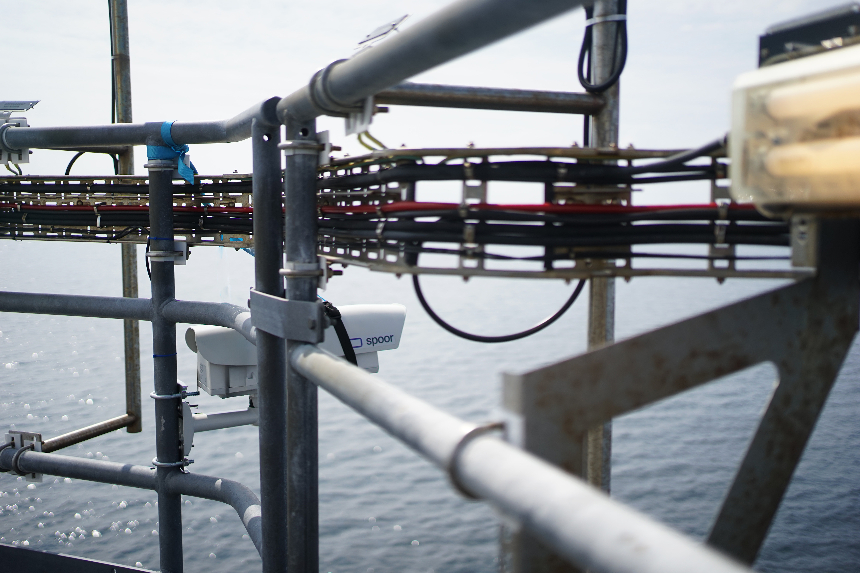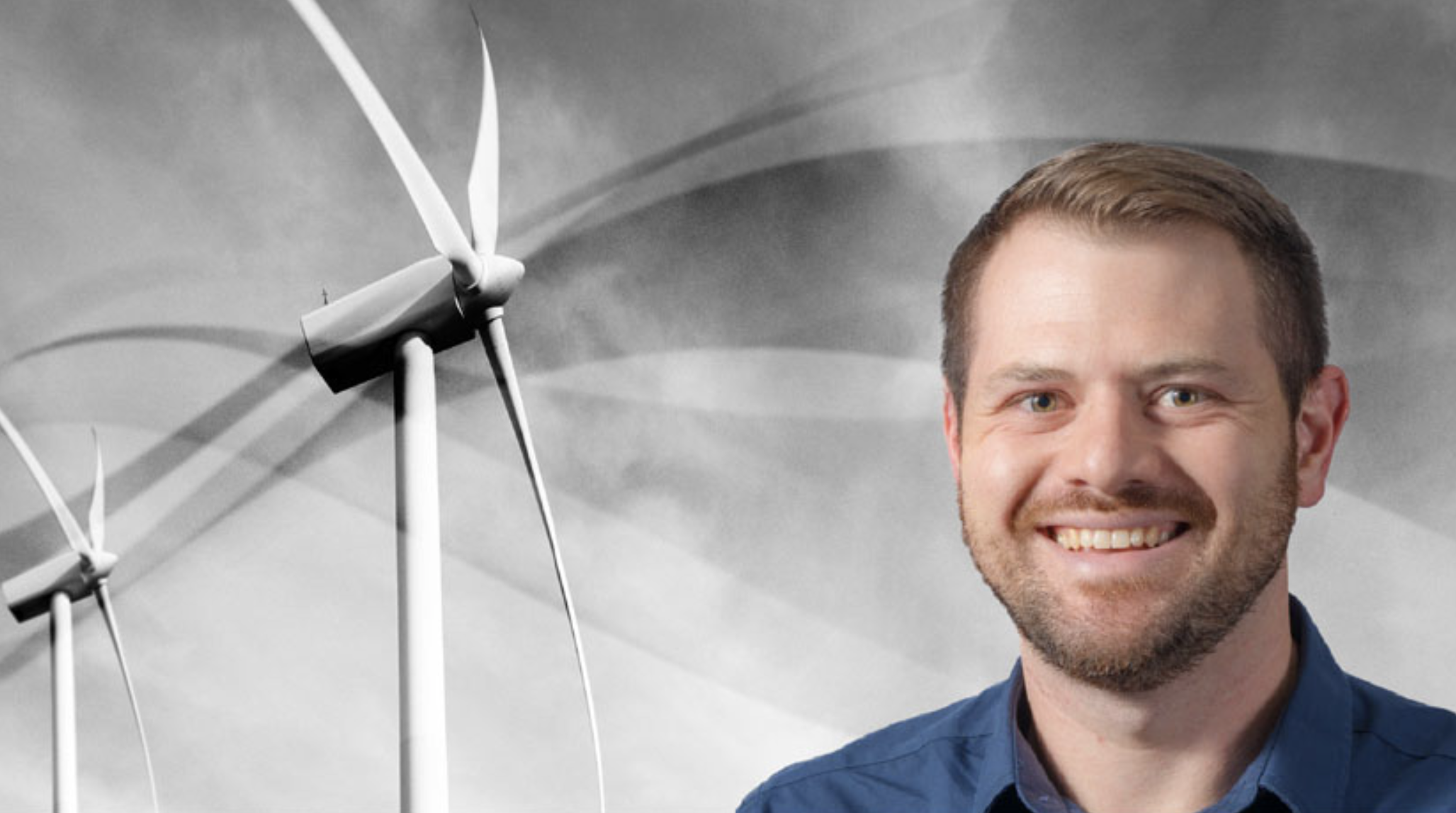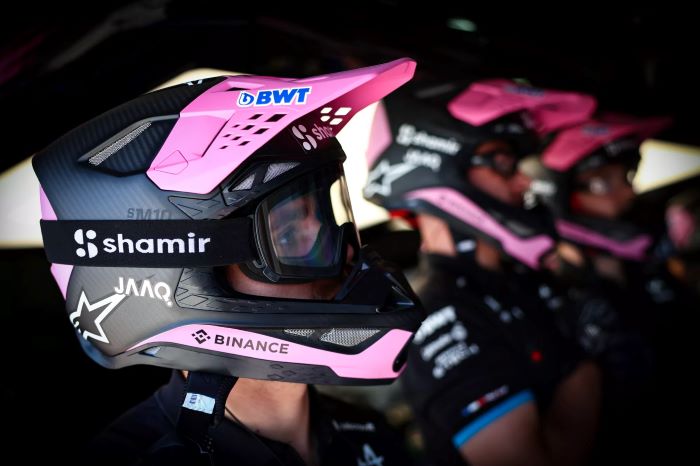Sign up for daily news updates from CleanTechnica on email. Or follow us on Google News!
For more than two years, the floating offshore wind turbine TetraSpar at METCentre off the coast of Norway has been monitored by a bird camera. No bird collisions have been recorded.
The Norwegian company Spoor that is responsible for the bird monitoring. Since January 2022, they have mapped bird activity at the floating offshore wind turbine at the Marine Energy Test Centre (METCentre), located about 10 kilometers off the coast of Karmøy. The cameras have captured over 21,000 bird passages since the monitoring began. The monitoring and analyses were conducted in collaboration with the Biodiversity Department at Multiconsult. In October 2023, an adjustment was made to the equipment to better detect potential collisions. Even after this adjustment, not a single collision has been registered.
Arvid Nesse, head of METCentre and Norwegian Offshore Wind, emphasized that these are very positive results.
“Analyses of birds and their movement patterns are important for the industry’s continued focus on offshore wind in Norway. The knowledge we have gained through this project will be valuable for understanding the coexistence between birds and wind turbines. This is new Norwegian technology that we are proud to be involved in. The further development will focus on improving resolution for increased detection, better automated species identification, and tracking behavioral changes in flight activity.”
The extensive bird mapping is the first of its kind in Norway. The data collected provides a solid picture of which species pass by the turbines and how they move. The monitoring shows the birds’ movement patterns around the turbines over time.
METCentre is located close to the area where Norway’s first large-scale floating offshore wind farm, Utsira Nord, will be built.
“These are Norway’s first two offshore wind turbines, and we are pleased that they are being used to increase knowledge about coexistence,” says Nesse.
METCentre has been granted a permit to install a total of seven different floating technologies for renewable energy production. The test center is involved in several research projects on nature, the environment, marine life, and bird research.
“We in the industry have a great responsibility to bring forward new knowledge and counter misinformation. Therefore, we want to openly share the results from the research we are involved in,” Nesse explained.
Spoor confirms that collisions between offshore wind turbines and birds rarely occur.
“Data collected at METCentre, under the mandate of the The Norwegian Water Resources and Energy Directorate (NVE), has provided valuable insight into how birds interact with floating offshore wind turbines. METCentre also proves to be an ideal place for the development of new wind technology, as it gives us a unique opportunity to verify and improve our AI solutions in real-world conditions,” says Spoor’s CEO, Ask Helseth.
Study Background
Marin Energi Testsenter AS manages an offshore site at the Norwegian west coast, designated for testing new wind turbine concepts, infrastructure, and other innovative methods for energy production in marine environments. The floating TetraSpar Demonstrator wind turbine with a novel tetrahedral foundation was installed at the test site in the summer of 2021. NVE (Norwegian Water Resources and Energy Directorate) granted installation and operating licences on conditions that an environmental impact assessment — including birdlife — were carried out.
There are large knowledge gaps relating to seabirds and offshore bird activity and whether and how they are impacted by offshore wind turbines. The conventional method for collecting data on birds has been by field observations by humans. For offshore areas, these conventional “boots on the ground” methods are not available. Radar technology can be used, but is costly and requires heavy and complex equipment. Manual bird observations from a boat or a plane is often used, but is expensive, logistically complex, and requires good weather. Collecting data on birds in only good weather can give a skewed picture of the actual bird activity as it does not inform how it may change with different weather conditions.
For the TetraSpar Demonstrator bird monitoring program, a novel technology solution for continuous monitoring of offshore birdlife from Spoor AS was selected. The Spoor system uses AI software to analyse video from surveillance cameras, thus reducing cost and technical complexity, while ensuring less skewed data collection. The monitoring started in June 2021 and was a pioneering initiative applying Spoor’s technology offshore for the first time.
The environmental impact assessment for TetraSpar Demonstrator was approved by NVE 4 July 2021, on the condition that a post-construction bird monitoring program was carried out for a minimum of 1 year with a focus on bird counts, general bird behaviour, and registration of potential collisions.
A separate report has been made for this. A lot of data has been collected by Spoor about the bird activity for the area in the last three years. The first report, “TetraSpar Demonstrator — Forundersøkelse av Fugleaktivitet,” on the pre-construction period from 18–25 June was delivered 29 June 2021. A second report, “Report on bird activity — Data from Spoor bird monitoring, June–December 2021,” was delivered 30 March 2022, analyzing the complete 2021 data and comparing the periods before and after the installation and production start on the TetraSpar turbine. This is the third report covering the period of January 2022 through June 2024, when the turbine has been operational, and concludes the mandatory monitoring program.
TetraSpar Demonstrator is a 3.6MW floating turbine from Siemens Gamesa. The turbine, formerly called Hywind Demo, was the world’s first full-scale floating wind turbine. The Hywind Demo turbine had a 65 metre hub height and a rotor diameter of 82.4 meters. After installation of the current foundation of a tetrahedral structure, the turbine was towed to the MET-center test site in June 2021, located 10 kilometers west of Syre on Karmøy with a water depth of 200 meters.
The TetraSpar consortium (Shell, TEPCO, RWE and Stiesdal Offshore Technologies) also invited start-ups, scale-ups, research institutes, companies and individuals to participate in a global innovation competition. The aim of the competition was to accelerate the development of floating wind turbines, use innovative solutions to reduce costs, overcome technical challenges, and minimize the impact on the environment.
The consortium received over 40 exciting applications for the innovation competition from 15 different countries. Eight exciting global innovations were selected to be tested on the floating offshore wind project.

Data Summary
- Camera location: Zefyros turbine, 10 km off the coast from Karmøy.
- Period: 1 January 2022 – 28 February 2023 and 18 October 2023 – 30 June 2024
- Days of data analysed: 588
- Hours of video analysed: 5,487
- Total bird detections: 21,138
- Most identified species: Gulls (91%), Great Black-backed Gull (40%)
- Bird detections subject for collision detection: 2,630
- Number of collisions identified: 0
Chip in a few dollars a month to help support independent cleantech coverage that helps to accelerate the cleantech revolution!
Have a tip for CleanTechnica? Want to advertise? Want to suggest a guest for our CleanTech Talk podcast? Contact us here.
Sign up for our daily newsletter for 15 new cleantech stories a day. Or sign up for our weekly one if daily is too frequent.
CleanTechnica uses affiliate links. See our policy here.
CleanTechnica’s Comment Policy




